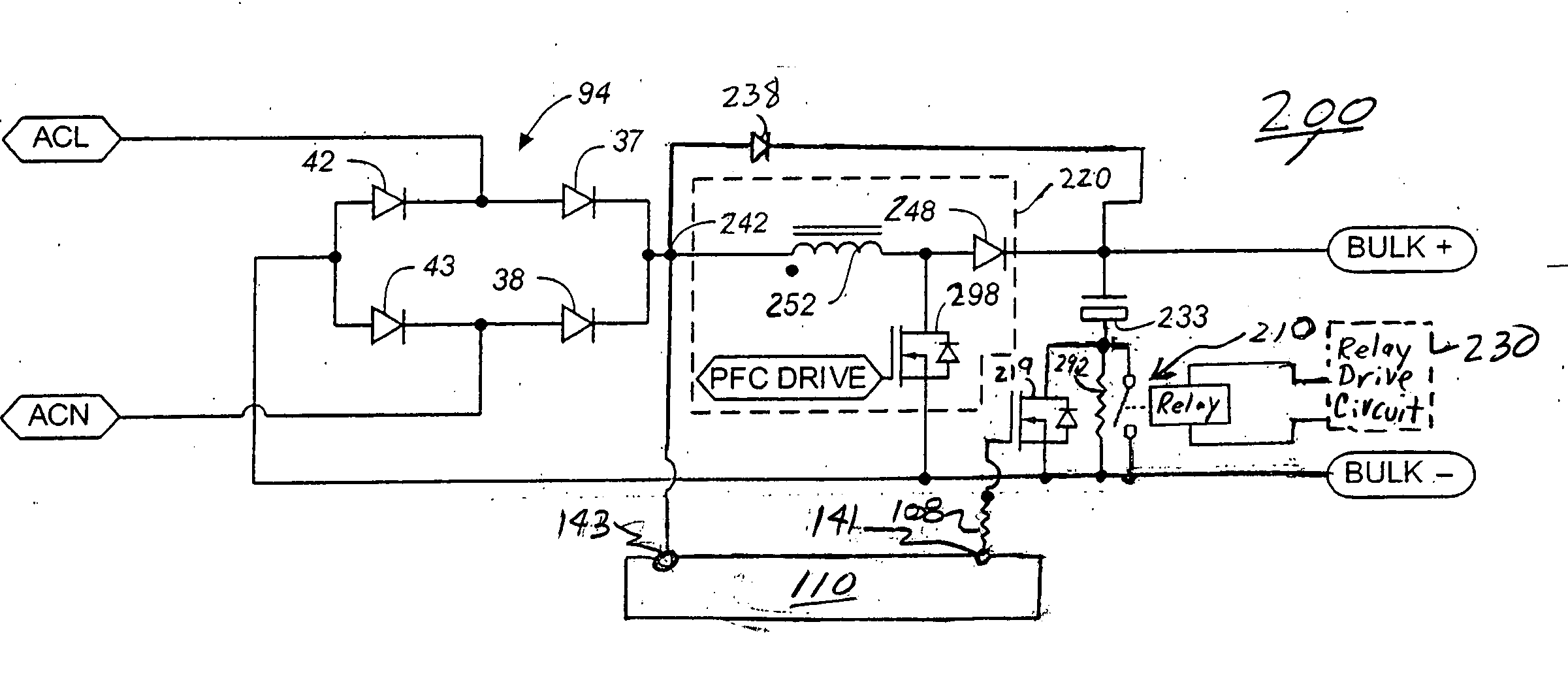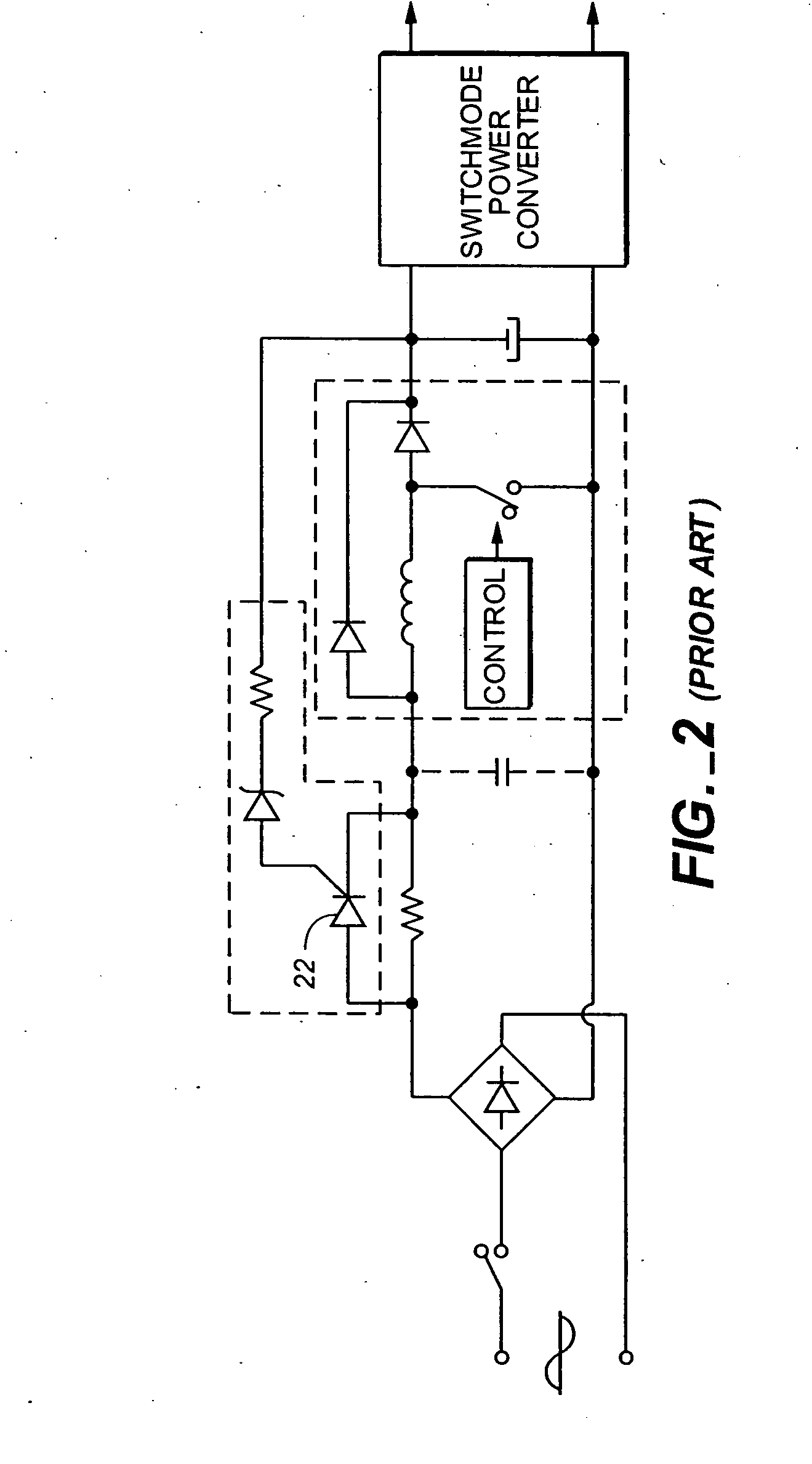Active inrush current control using a relay for AC to DC converters
a technology of inrush current control and relay, which is applied in the direction of power conversion systems, emergency protective arrangements for limiting excess voltage/current, electrical appliances, etc., can solve the problems of power dissipation proportional to input current, loss of redundancy of the entire system, and high requirements for inrush current modern power supplies, etc., to reduce power loss, improve efficiency, and reduce cost
- Summary
- Abstract
- Description
- Claims
- Application Information
AI Technical Summary
Benefits of technology
Problems solved by technology
Method used
Image
Examples
Embodiment Construction
[0058] The present invention comprises a circuit and corresponding method which provides control to limit inrush current during cold startup, hot startup and power line disturbance conditions in AC to DC power converters. The present invention overcomes the drawbacks of the known circuits and methods. The present invention will now be described in further detail.
[0059]FIG. 7A shows a circuit diagram of a preferred embodiment of an AC-DC power converter 200 according to the present invention. Converter 200 is operatively connected between an AC input voltage (shown appearing across terminals ACL and ACN) from an AC voltage source (not shown) and an DC bulk output voltage appearing across terminals “Bulk+” and “Bulk-”. The DC bulk output voltage is typically applied to the inputs of a DC-DC converter (not shown) to provide further regulation and / or voltage conversion. The AC input voltage is coupled to a bridge rectifier 294. The bridge rectifier 294 comprises diodes 237, 238, 242, a...
PUM
 Login to View More
Login to View More Abstract
Description
Claims
Application Information
 Login to View More
Login to View More - R&D
- Intellectual Property
- Life Sciences
- Materials
- Tech Scout
- Unparalleled Data Quality
- Higher Quality Content
- 60% Fewer Hallucinations
Browse by: Latest US Patents, China's latest patents, Technical Efficacy Thesaurus, Application Domain, Technology Topic, Popular Technical Reports.
© 2025 PatSnap. All rights reserved.Legal|Privacy policy|Modern Slavery Act Transparency Statement|Sitemap|About US| Contact US: help@patsnap.com



